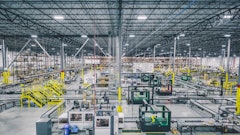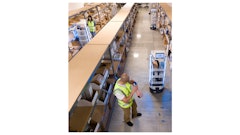
The Logistics Manager’s Index (LMI) reads in at 55.3 in June, which is slightly down (-0.3) from May’s reading of 55.6. The overall index has expanded for seven consecutive months and in 10 of the last 11 months. While the overall index has not changed significantly this month, there has been considerable movement in some of the individual metrics.
For instance, inventory levels (+0.8) contracted for the second month in a row at a rate of 47.4. Decreased inventories also saw associated dips in the expansion rate of inventory costs (down 1.6 points to 63.6) and a notable drop in warehousing utilization (down 11.4 points to 52.6). This slowdown is counteracted by a tightening of both warehousing capacity (-3.0) at 52.6 and transportation capacity (-7.3), which read in at 50, the first time this metric has moved out of expansion since March 2022.
The industry also saw a related increase (+3.2) in transportation prices, which at 61, are at their highest level since September 2022. At an 11-point difference, transportation prices have not exceeded transportation capacity by this much since April 2022. This marks the second consecutive month that prices have exceeded capacity, and transportation capacity has moved out of expansion and to “no change” at 50. If this trend continues, it’s safe to say the freight recession that has gripped the industry since the Spring 2022 is coming to an end.
“The overall economy continues to be fairly nuanced, but has consistently pointed towards moderate growth, with some hope that interest rates may be revised down,” according to the LMI, a joint project between researchers from Arizona State University; Colorado State University; University of Nevada, Reno; Florida Atlantic University; and Rutgers University, supported by Council of Supply Chain Management Professionals (CSCMP).
Key takeaways:
- The freight recession is not technically over yet, but this is the is what the beginning of a recovery might look like.
- The LMI read in at 55.3 in June is down slightly (-0.3) from May’s reading of 55.6, indicating a moderate rate of expansion in the overall index.
- The World Bank is optimistic that strong growth will continue throughout the year, revising their estimates for global GDP expansion up from 2.4% to 2.6%, largely on the strength of the U.S. economy.
- Personal income was up 0.5%, spending was down 0.2% in May. The decline in spending was headlined by a 0.4% decrease in spending on goods, something that may be reflected in contracting inventory numbers. Firms may be more willing to invest in inventories – particularly upstream – when interest rates come down.
- New weekly jobless claims in the United States were down to 238,000 in mid-June, down from 5,000 from the week before. Conversely, continuing unemployment claims increased by 15,000 to 1.828 million, which is the highest level since 2021.
- U.S. orders for manufactured durable goods increased 0.1% in May to $283.1 billion, partially explaining the mild growth in upstream inventories. The largest factor contributing to this increase was transportation equipment, which was up 0.6% to $95.4 billion.
- There could continue to be pressure on the West coast ports as East and Gulf Coast dockworkers pulled out of planned negotiations in protest against the planned implementation of increased automation at ports. The association includes 45,000 workers and their contract is set to expire on Sept. 30, meaning a strike could happen at the height of peak season.
- Starting with ocean shipping, delays in the Red Sea along with a push towards early peak season has led to a spike in demand for ocean containers.
- Respondents to the LMI survey continue to be largely optimistic about the future of the logistics industry, predicting an overall growth rate of 66.1, which is up very slightly (+0.6) from May’s future prediction of 65.5 and is the highest future prediction in more than two years. The optimism is driven by expectations for substantial growth in inventory levels (69.5), which will then lead to significant growth rates in the 70s for inventory costs (75.5), transportation utilization (70) and transportation costs (79.8).


























